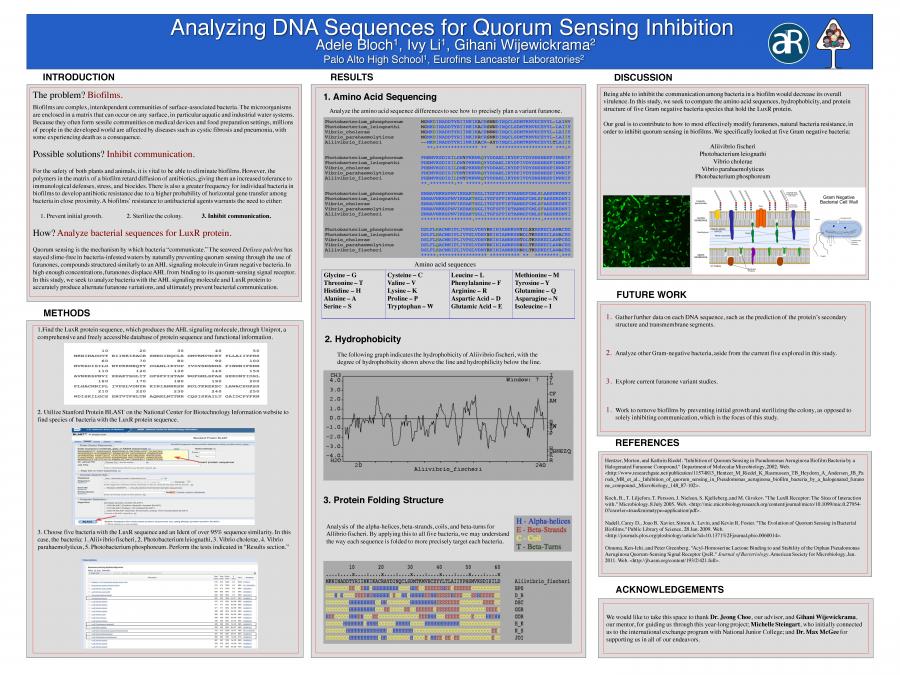Analyzing Furanone Variants for Quorum Sensing Inhibition by Adele B. & Ivy L.
Presentation
Summary
Biofilms are complex, interdependent communities of surface-associated bacteria. The microorganisms are enclosed in an exopolysaccharide matrix that can occur on any surface, in particular aquatic and industrial water systems. Because they often form sessile communities on medical devices and food preparation settings, millions of people in the developed world are affected by diseases such as cystic fibrosis and pneumonia, with some experiencing death as a consequence. For the safety of both plants and animals, it is vital to harness the ability to eliminate biofilms. However, as bacteria switch between a planktonic lifestyle to a biofilm lifestyle, the polymers in their matrix retard diffusion of antibiotics, giving biofilms an increased tolerance to host immunological defenses, stress, and biocides. Moreover, there is a greater frequency for individual bacteria in biofilms to develop antibiotic resistance due to the higher probability of horizontal gene transfer among bacteria in close proximity. A biofilms’ resistance to antibacterial agents warrants the need to either prevent initial growth, sterilize the colony, or inhibit communication. In our study, we seek to focus on the latter of the three.

